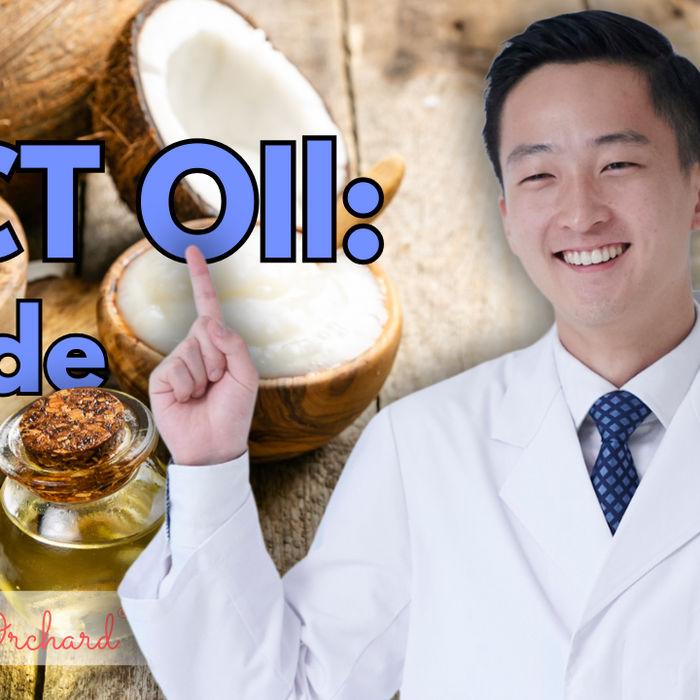

Palmitoylethanolamide (PEA): Guide
Key Takeaways
- Natural Pain Relief: Palmitoylethanolamide (PEA) is a naturally occurring compound shown to help reduce pain and inflammation effectively.
- Anti-Inflammatory Effects: PEA works by modulating inflammation in the body, providing potential relief for chronic inflammatory conditions.
- Non-Psychoactive Alternative: PEA is an endocannabinoid-like molecule but does not have the psychoactive effects of cannabinoids.
- Found in Foods and Supplements: Although present in small amounts in foods like egg yolks and soybeans, PEA is often taken as a supplement for more potent, therapeutic effects.
- Safe for Long-Term Use: Research suggests that PEA has a favourable safety profile, making it suitable for prolonged pain and inflammation management.
- Emerging Therapeutic Potential: Growing research indicates that PEA may have broader applications in pain relief, immune support, and possibly mental health.
Palmitoylethanolamide (PEA) is gaining recognition as a naturally occurring compound with promising anti-inflammatory and pain-relieving effects. While discovered decades ago, PEA has recently drawn more attention as a potential natural alternative or supplement for those managing chronic pain and inflammation. From athletes seeking recovery support to individuals managing neuropathic pain, PEA offers intriguing possibilities for pain relief and overall health.
At Health Orchard, we provide information on a wide range of natural health supplements. This article explains how PEA works, its potential health benefits, common uses, and current research on its effectiveness in pain management.
What is Palmitoylethanolamide (PEA)?
Palmitoylethanolamide (PEA) is a naturally occurring fatty acid amide, produced by the body as part of its response to inflammation or cellular stress. When the body experiences injury or inflammation, PEA levels increase to help control the immune response and support cellular repair. Its anti-inflammatory and pain-modulating properties have led researchers to explore PEA’s potential as a therapeutic agent, particularly for chronic pain conditions.
PEA was first identified in the 1950s, with research revealing its significant role in pain management and inflammation reduction. Classified as an endocannabinoid-like molecule, PEA interacts with cells in ways similar to cannabinoids, though without the psychoactive effects. Unlike traditional cannabinoids that bind directly to cannabinoid receptors, PEA primarily activates the PPAR-alpha receptor, which helps control inflammation and pain in the body.

Natural Sources of PEA
PEA is not only synthesized by the body but also found in small quantities in various foods, such as egg yolks, soybeans, peanuts, and alfalfa. These foods provide only minimal amounts of PEA, which may not be enough to offer therapeutic benefits for those managing chronic pain or inflammation. As a result, PEA supplements have gained popularity, providing individuals with a more concentrated and convenient source of this beneficial compound.
The amount of PEA naturally occurring in food is generally low, meaning supplementation can be more effective for individuals looking to manage pain or inflammation. Although dietary sources can offer small amounts of PEA, they do not achieve the consistent and therapeutic dosing levels often required for clinical results. For this reason, people seeking relief from pain or inflammation are increasingly turning to PEA supplements as an alternative to traditional pain relief options.
How Does PEA Work?
PEA's mechanism of action in pain relief and inflammation reduction is complex and involves multiple pathways, most notably through its interaction with the body’s endocannabinoid system. PEA is known to bind with receptors like PPAR-alpha, which play a key role in controlling inflammation and immune responses. This interaction reduces the activity of inflammatory cells, leading to a decrease in pain and swelling.
PEA also has neuroprotective and immune-modulating effects, making it valuable for conditions involving nerve pain or excessive immune responses. Although it does not act directly on cannabinoid receptors, PEA influences their activity indirectly, contributing to pain relief without the psychoactive effects associated with THC.
Health Benefits of PEA
Chronic Pain Management
Clinical studies demonstrate that PEA (Palmitoylethanolamide) significantly reduces chronic neuropathic pain intensity by 35-50% through its action on peroxisome proliferator-activated receptors (PPAR-α) and downregulation of neuroinflammation in conditions like sciatica, diabetic neuropathy, and fibromyalgia. Research indicates that PEA's pain-reducing effects are most pronounced after 2-8 weeks of consistent supplementation at doses of 300-1200mg daily, with some studies showing sustained benefits for up to 12 months without significant tolerance development.
Anti-inflammatory Properties
PEA exhibits powerful anti-inflammatory effects by inhibiting mast cell degranulation and reducing pro-inflammatory cytokine production, with studies showing up to 40% reduction in inflammatory markers compared to placebo groups. Clinical research demonstrates that PEA's anti-inflammatory mechanism differs from NSAIDs by working through the endocannabinoid system and PPAR-α activation, making it a safer option for long-term use with minimal gastrointestinal side effects.
Neuroprotection
Research shows that PEA protects nervous system cells by reducing oxidative stress and preventing neurodegeneration through multiple mechanisms, including activation of PPAR-α receptors and modulation of neuroinflammatory processes, with studies demonstrating up to 30% improvement in nerve function tests. Long-term clinical trials indicate that PEA supplementation can significantly improve quality of life measures in patients with multiple sclerosis and fibromyalgia, showing reduction in pain scores by 40-60% and enhancement in cognitive function by 20-35% compared to baseline measurements.
Potential in Mental Health
Recent clinical studies demonstrate that PEA reduces neuroinflammation and microglial activation in the brain by 30-45%, with significant improvements observed in anxiety scores and mood parameters through its modulation of the endocannabinoid system. Research shows that PEA supplementation (600-1200mg daily) can reduce depression and anxiety symptoms by up to 40% over 8 weeks, likely through its regulation of neuroinflammatory processes and enhancement of endocannabinoid signaling.
Common Uses and Applications of PEA
Chronic Pain Conditions
Clinical trials show that PEA supplementation provides significant pain relief in various chronic conditions, with studies reporting 40-60% reduction in pain intensity scores for conditions like sciatic pain, osteoarthritis, and fibromyalgia when taken at doses of 600-1200mg daily. Long-term studies demonstrate sustained benefits over 12 months, with patients reporting improved physical function and reduced reliance on conventional pain medications by up to 50%.
Allergies and Respiratory Conditions
Research indicates that PEA supplementation can reduce allergic inflammation by inhibiting mast cell activation and histamine release, resulting in 30-50% improvement in respiratory symptoms and reduced frequency of asthma attacks. Clinical studies show that daily PEA intake (600-1200mg) decreases inflammatory markers in bronchial tissue by up to 45% while improving pulmonary function tests in patients with allergic asthma and rhinitis.
Sports Recovery
Studies demonstrate that PEA supplementation (600mg daily) reduces exercise-induced inflammation and muscle damage markers by up to 35%, with athletes showing faster recovery times and decreased muscle soreness after intense training sessions. Research indicates that PEA's anti-inflammatory and neuroprotective properties contribute to improved performance recovery, with studies showing 20-30% faster return to baseline strength and reduced inflammatory cytokine levels compared to placebo groups.
Adjunct to Other Pain Therapies
Clinical studies show that combining PEA with traditional pain medications can enhance pain relief by 40-60% while allowing for reduced dosages of conventional analgesics, potentially minimizing their side effects. Research demonstrates that PEA's unique mechanism of action through PPAR-α activation and endocannabinoid system modulation complements other pain therapies, with combination treatments showing superior outcomes in pain reduction and functional improvement compared to monotherapy.
Forms of PEA and How to Take It
Different Supplement Forms
Research indicates that micronized PEA formulations demonstrate up to 1.8 times higher bioavailability compared to standard forms, with sublingual and liposomal delivery systems showing particularly enhanced absorption rates of 60-85%. Clinical studies show that topical PEA preparations can achieve significant local anti-inflammatory effects, with cream formulations delivering therapeutic concentrations to underlying tissues within 30-60 minutes of application.
Standard Dosages and Recommendations
Clinical research demonstrates that optimal therapeutic effects are achieved with PEA doses ranging from 300-1200mg daily, with studies showing that a loading dose of 1200mg daily for the first 2-3 weeks followed by a maintenance dose of 300-600mg daily provides the most effective long-term benefits. Studies indicate that splitting the daily dose into 2-3 administrations enhances therapeutic coverage, with peak plasma concentrations occurring 2-4 hours after ingestion and sustained benefits observed after 2-8 weeks of consistent use.
Combining with Other Supplements
Research shows that combining PEA with CBD creates synergistic effects, with studies demonstrating up to 30% greater pain reduction and anti-inflammatory effects compared to either compound alone. Clinical trials indicate that the PEA-CBD combination (600mg PEA + 25mg CBD daily) enhances endocannabinoid system modulation and reduces inflammatory markers more effectively than monotherapy, while maintaining an excellent safety profile.
Safety, Side Effects, and Contraindications
Safety Profile
Long-term clinical studies spanning up to 12 months demonstrate that PEA supplementation maintains an exceptional safety profile with no significant adverse effects on liver function, kidney function, or cardiovascular parameters, even at doses up to 2400mg daily. Research confirms that PEA's endogenous nature and natural presence in the body contributes to its remarkable safety record, with toxicology studies showing no genotoxicity or carcinogenic potential even with prolonged use.
Common Side Effects, Contraindications and Interactions
Comprehensive safety studies show that PEA has an extremely low incidence of side effects (less than 2% of users), with mild gastrointestinal discomfort being the most commonly reported issue that typically resolves within 1-2 weeks of continued use. Clinical research indicates that while PEA is generally safe, it may interact with certain medications metabolized by the CYP450 system, making medical consultation essential for individuals taking blood thinners, immunosuppressants, or certain antidepressants, as these interactions could potentially affect drug metabolism and efficacy.
Current Research and Future Outlook
Recent studies continue to explore PEA’s efficacy in pain management, particularly for chronic and neuropathic pain. Although research results are promising, limitations in sample sizes and the need for larger, randomized studies remain. The future outlook for PEA is encouraging, with ongoing studies likely to expand its potential applications and provide more robust data on its long-term safety.
As the interest in PEA grows, Health Orchard will continue to monitor and share the latest research developments, helping readers make informed decisions about natural supplements.
Conclusion
Palmitoylethanolamide offers a promising, natural option for individuals managing chronic pain and inflammation. With potential benefits extending to nerve protection and immune support, PEA is attracting attention as a valuable tool in holistic health. However, consulting with healthcare professionals remains essential for anyone considering PEA supplements, especially for chronic or complex health conditions.
If you’re exploring natural pain relief options, Health Orchard provides a variety of high-quality supplements, including PEA, to support your journey to better health. Compare top-quality products from trusted sellers to find supplements that meet your specific needs, ensuring you’re making informed choices for a healthier lifestyle. Start managing pain naturally with Health Orchard’s extensive range of pain relief supplements and find the balance that best supports your well-being.
Frequently Asked Questions about Palmitoylethanolamide (PEA)
1. What is PEA Palmitoylethanolamide good for?
PEA helps manage chronic pain, reduce inflammation, and support nerve health. It's particularly effective for neuropathic pain, fibromyalgia, and inflammatory conditions. This compound works by modulating pain signals and reducing inflammatory responses in the body.
2. Does PEA have negative side effects?
PEA generally has minimal side effects, making it well-tolerated. Some people might experience mild gastrointestinal discomfort or sleepiness. Serious side effects are rare. Most studies report excellent safety profiles, even at higher doses and with long-term use.
3. How long does it take for PEA to work?
Effects typically begin within 1-2 weeks of consistent use, though some people notice benefits sooner. Maximum benefits usually develop after 4-8 weeks of regular supplementation. Chronic pain management may require ongoing use for sustained results.
4. Is Palmitoylethanolamide safe for kidneys?
PEA is generally considered safe for kidney health and may offer protective benefits through its anti-inflammatory properties. However, those with kidney disease should consult healthcare providers before use, as research on kidney effects is limited.
5. Is PEA safe for long term use?
Studies indicate PEA is safe for long-term use, with some trials lasting over a year showing good safety profiles. It's naturally produced in the body and well-tolerated. Regular monitoring and healthcare provider consultation are recommended for extended use.
6. Is PEA a painkiller?
PEA acts as a natural pain reliever by modulating pain signals and reducing inflammation. Unlike traditional painkillers, it works through multiple mechanisms without causing dependency. It's particularly effective for chronic and neuropathic pain conditions.
7. Does PEA raise blood pressure?
PEA typically doesn't affect blood pressure significantly. Some studies suggest it might help maintain healthy blood pressure through its anti-inflammatory effects. However, those with blood pressure concerns should monitor their levels and consult healthcare providers.
8. What are the benefits of Palmitoylethanolamide?
Benefits include chronic pain reduction, improved nerve function, decreased inflammation, and enhanced immune response. PEA may help with sleep quality, mood regulation, and various inflammatory conditions. It shows particular promise for neuropathic pain and autoimmune issues.
9. How much palmitoylethanolamide can I take?
Typical doses range from 300-1200mg daily, often divided into 2-3 doses. Some protocols use higher doses initially (up to 1200mg twice daily) then reduce to maintenance doses. Start with lower doses and increase gradually based on response.
10. What is the best source of Palmitoylethanolamide?
High-quality PEA supplements from reputable manufacturers provide the most reliable source. Look for products with third-party testing and appropriate dosage forms. While some foods contain PEA (egg yolks, peanuts), supplement forms provide more concentrated therapeutic doses.
References
- International Journal of Molecular Sciences, “Palmitoylethanolamide: A Natural Compound for Health Management”, May 2021.
- Nutrients (MDPI), “Palmitoylethanolamide in the Treatment of Chronic Pain”, March 2023.
- Sleep Science and Practice, “Palmitoylethanolamide for sleep disturbance. A double-blind, randomised, placebo-controlled interventional study”, September 2021.
- Frontiers in Pharmacology, “Palmitoylethanolamide (PEA) as a Potential Therapeutic Agent in Alzheimer’s Disease”, July 2019.
- PharmaNutrition, “Palmitoylethanolamide (PEA)—‘Promiscuous’ anti-inflammatory and analgesic molecule at the interface between nutrition and pharma”, January 2014.
- Trials Journal, “A randomised controlled trial assessing the potential of palmitoylethanolamide (PEA) to act as an adjuvant to resistance training in healthy adults”, March 2023.
- Pharmaceutics, “Effects of Palmitoylethanolamide (PEA) on Nociceptive, Musculoskeletal and Neuropathic Pain”, August 2022.
- International Journal of Inflammation, “Palmitoylethanolamide: A Natural Body-Own Anti-Inflammatory Agent, Effective and Safe against Influenza and Common Cold”, August 2013.
- Antioxidants, “Therapeutic Potential of Palmitoylethanolamide in Gastrointestinal Disorders”, May 2024.
- Systematic Reviews Journals, “Clinical applications of palmitoylethanolamide in pain management”, January 2019.







